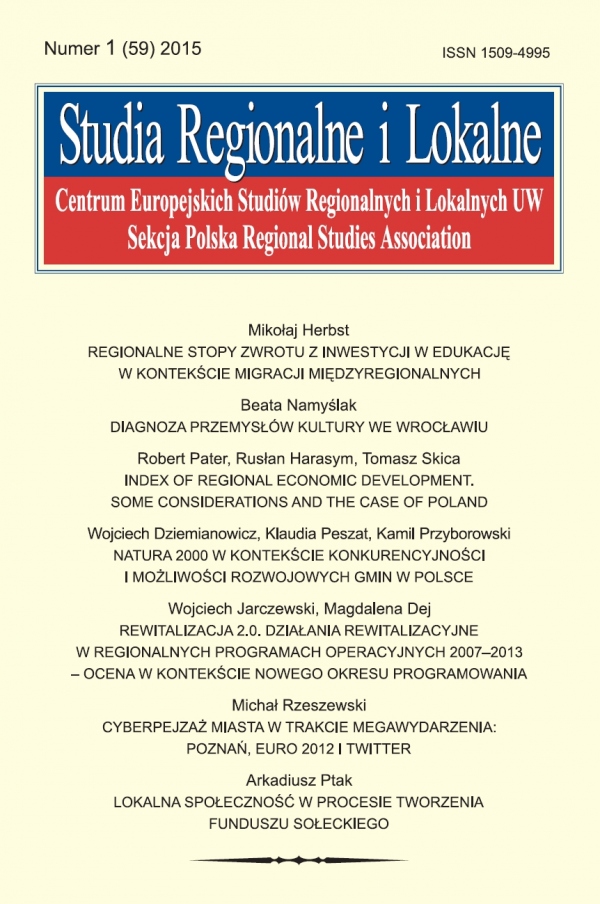Issue:
1(59)/2015
Mikołaj Herbst
Regional returns to education in the context ofinterregional migration
DOI: 10.7366/1509499515901
Regionalne stopy zwrotu z inwestycji w edukację w kontekście migracji międzyregionalnych
Celem niniejszego artykułu było oszacowanie stóp zwrotu z inwestycji w wyższe wykształcenie dla osób mieszkających w różnych województwach, a także potencjalnych korzyści z migracji osób wykształconych między województwami. Wyniki pokazują, że korzyści z wyższego wykształcenia są w Polsce większe dla kobiet niż dla mężczyzn. Płacowe korzyści z wykształcenia rosną także wraz z wiekiem i stażem zawodowym, jednak przyrost ten cechuje się malejącą wartością krańcową. Wewnątrzregionalne stopy zwrotu z inwestycji w edukację, oszacowane przy założeniu braku migracji pracowników, są słabo skorelowane z wysokością oczekiwanego wynagrodzenia. Natomiast stopy zwrotu z migracji międzyregionalnej dla osób z wyższym wykształceniem wskazują, że najbardziej atrakcyjny dla absolwentów uczelni jest rynek pracy województwa mazowieckiego, a najmniej – podlaskiego. Szczególnie silną motywację do migracji powinny mieć wykształcone kobiety z Podlasia. Badanie pokazało także, że w przypadku niektórych województw zarobki wykształconych mieszkańców są w znacznej mierze kształtowane przez możliwość pracy na rynkach sąsiednich, oferujących bardziej atrakcyjne wynagrodzenia. Do takich województw należą łódzkie oraz lubuskie.
Regional returns to education in the context ofinterregional migration
The goal of this article was to estimate the regional rates of return of investment in higher education as well as potential benefits of migration of educated people between Polish regions. The results show that the benefits of higher education in Poland are higher for women than for men. Also, wage benefits of education grow with age and work experience, but they are characterized by decreasing marginal value. Internal returns of investment in education, calculated for every region assuming no migration of workers, are weakly correlated with the expected salaries of university graduates. In turn, the returns of interregional migration for people with higher education indicate that the most attractive destination in Mazowieckie, and the least attractive – Podlaskie. A particularly strong motivation for migration is faced by educated women of Podlasie. The research demonstrated also that in some regions (Lodzkie, Lubuskie), the expected earnings of graduates are largely influenced by the opportunity to work in neighbouring regions, offering more attractive salaries.
Affiliation:
Mikołaj Herbst: Uniwersytet Warszawski, Centrum Europejskich Studiów Regionalnych i Lokalnych, ul. Krakowskie Przedmieście 30, 00-927 Warszawa;
mherbst@uw.edu.pl 


